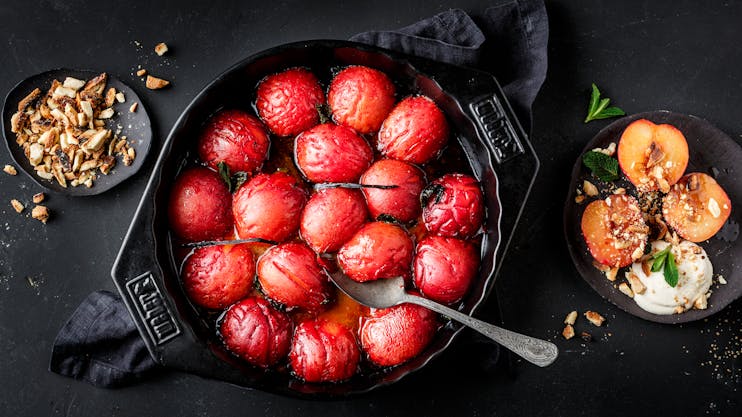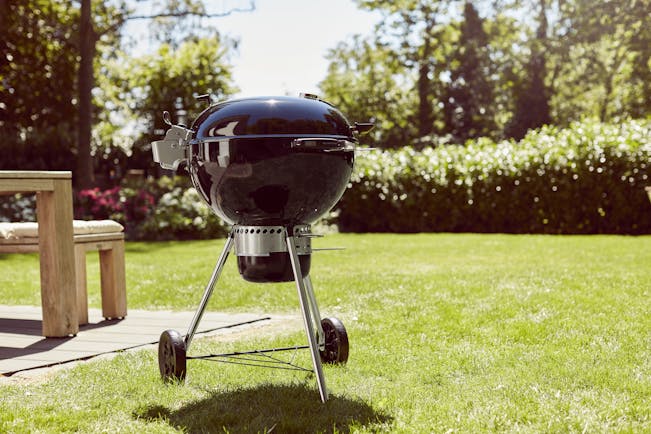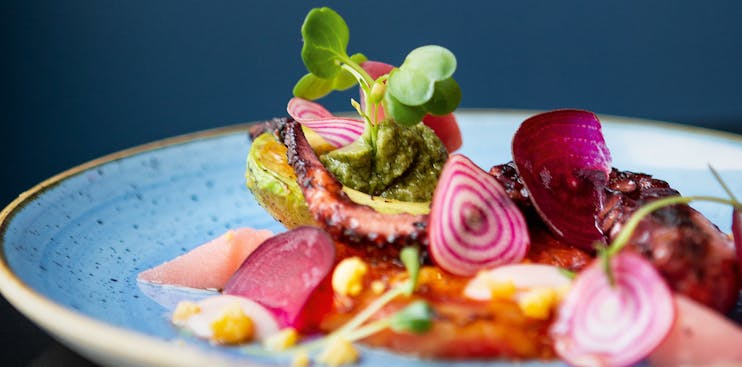In the kitchen:
1. Using a very sharp knife, trim the fat on the fatty side of the brisket so that it is about 5 mm thick, but no less. On the meatier side, remove the web-like membrane so that the coarsely grained meat underneath is visible. Make sure to remove any hard clumps of fat on either side of the brisket.
2. Mix the salt and pepper, and then rub the brisket evenly on both sides with the seasoning. Put the brisket in the fridge until you’re ready to cook.
At the barbecue:
1. Prepare the barbecue for indirect cooking at very low heat (110° C). (Refer to our smoking guide for advise on how to set up)
2. Spray the brisket on both sides with water to make the surface wet. Add half of the wood chunks to the barbecue. When smoke appears, place the brisket, fat side down, on the top cooking grate, close the lid, and cook over indirect, very low heat until it has a nice dark crust on the surface, i.e. for about 4 hours. After the first hour, add the remaining wood chunks to the barbecue. The surface colour of the meat indicates that you have created a good ‘bark’, and that the brisket will no longer absorb much smoke, so it is time to wrap it up. While colour is the primary indication, you should also check the internal temperature of the meat at this point. It should be somewhere between 65 and 70° C in the thickest part of the meat.
3. Remove the brisket from the barbecue, and spray it on both sides with water. Then wrap the brisket in damp baking paper before tightly wrapping it in heavy-duty aluminium foil.
4. Place the wrapped brisket, fat side down, on the top grate of the barbecue and continue cooking over indirect very low heat, with the lid closed, until the meat is so tender that when you press it with your fingers through the foil, it feels like a giant marshmallow and the internal temperature is 90–95° C, i.e. for 2 to 4 hours or more (tenderness is a more important indicator of doneness than temperature). The amount of time required will depend on the particular breed of cattle and other characteristics of the meat.
5. Transfer the brisket, still wrapped in foil, to a dry, insulated coolbox. Close the lid and let the meat rest for 2 to 4 hours.
6. Unwrap the brisket and place it on a cutting board, being careful to keep the precious meat juices in the foil.
7. Warm the barbecue sauce over a medium heat on the stove for about 5 minutes. Cut the brisket across the grain into thin slices, and serve with as much or as little sauce as you like. If desired, add the meat juices to the sauce. If the meat from the flat is a little dry, coarsely chop it and mix with as much sauce as you like.
Serving Suggestion
1. Serve warm on buns, or with a side of coleslaw or barbecued beans, for a typical Texan treat!
All of our recipes are created by our expert chefs at the Weber Grill Academy. View more inspirational recipes or book a course at the Grill Academy now.



